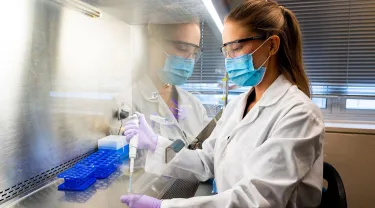Most of the cultured meat products—cell-grown chicken, beef, pork, and fish—in development at startup companies around the world exist in the form of an unstructured mixture of cells. What is lacking is the real texture of a filet or steak—a texture created by muscle fibers, connective tissue, and fat. The fat contributes not only to the meat’s texture but also to its flavor.
Leading the development of the cellular agriculture industry and solving key technological challenges in cell-grown meat production, the Tufts University Center for Cellular Agriculture (TUCCA) has successfully bulk-produced cultivated fat tissue that has a similar texture and make-up to the fat tissue that naturally occurs in animals.
This cultured fat could be applied to the production of cultured meat, giving it a more realistic texture and flavor.
Producing cultured fat tissue in sufficient quantities has been a major challenge, because as the fat grows into a mass, the cells in the middle become starved of oxygen and nutrients. In nature, blood vessels and capillaries deliver oxygen and nutrients throughout the tissue. Researchers still have no way to replicate that vascular network at large scale in cultured tissue, so they can only grow muscle or fat to a few millimeters in size.
To get around this limitation, the TUCCA researchers first grew fat cells derived from mice and pigs in a flat, two-dimensional layer, then harvested those cells and aggregated them into a three-dimensional mass with binders such as alginate (developed from seaweed) and microbial transglutaminase (MTG), both of which are already used in some commercial foods.
The aggregated fat cells immediately had the appearance of fat tissue. To explore the texture, researchers compressed the fat tissue to see how much pressure it could withstand compared to natural animal fat. Their findings suggest it could be possible to fine-tune the texture of cultured fat using different types and amounts of binders, so that it most closely resembles the real-life texture of fat within meat.
The team also examined the composition of molecules from the cell-grown fat and found that it might be possible to supplement growing fat cells with different lipids to ensure that they more closely match the fatty acid composition of natural meat.
The goal, said David Kaplan, Stern Family Professor of Biomedical Engineering at Tufts School of Engineering and TUCCA director, is to refine every aspect of cultured meat production “with an eye toward enabling mass production of meat that looks, tastes, and feels like the real thing.”
